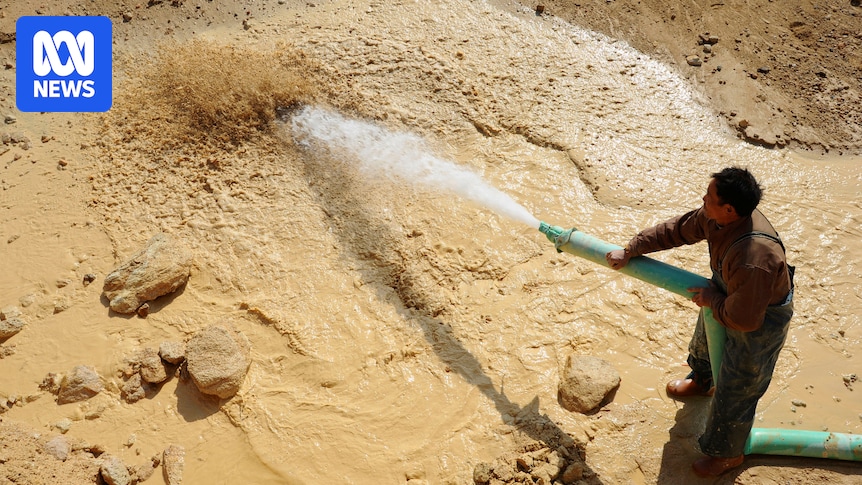
If there is any mystery over America’s historic agreement to partner with Australia this week on the supply of critical minerals, it is why it took so long. On April 4, just two days after Donald Trump’s much-touted Liberation Day tariffs panicked investors and sent markets into a tailspin, Beijing retaliated with its own ferocious hit to the American economy. It imposed restrictions on the export of seven rare earth minerals to America, vital ingredients in the manufacture of everything from household appliances to the most sophisticated weapons systems.
Since then, the trade battle between Washington and Beijing has waxed and waned, in line with the US president’s capricious nature. And then, China’s President Xi Jinping decided to up the ante. A few weeks back, Beijing expanded the restrictions, this time including rare earths specifically used by the US defense sector. If ever there was a catalyst for decisive action, that was it.
Australia as a Strategic Partner
Despite all the swagger and bluff about “a deal” with Ukraine over critical minerals or taking control of Greenland, the far more obvious destination to break China’s grip on critical minerals was always in full view: Australia. This week’s historic partnership, involving joint investments in mining and processing critical minerals, including rare earths, builds on earlier investments under Joe Biden’s Inflation Reduction Act.
Beijing’s recent actions may have been the last straw. But it isn’t the first time it has wielded its muscle with minerals. It restricted exports of gallium and germanium — key materials in the creation of microchips — in December last year after the Biden administration refused China access to the high-grade chips required for Artificial Intelligence.
China’s Historical Dominance
The power plays go back years. The Middle Kingdom has engaged in not-so-subtle and, occasionally, nefarious tactics to entrench its near-monopoly position on much of the global metal trade. And it has never been afraid to use the power that a monopoly delivers to impose its will and punish nations it considers hostile.
America dominates the global financial system. The Middle East controls energy. What isn’t generally known is that China, during the past 40 years, has created a vice-like grip on the mining, refining, and production of global metals. It’s not just nickel, lithium, graphite, and cobalt — the materials essential for battery production and the renewable energy age — where it holds the rest of the world in its palm.
John Coyne from the Australian Strategic Policy Institute points out that China currently controls production of 29 commodities, including 22 metals and seven industrial minerals. That delivers it power on both sides of the demand and supply equation.
The Rare Earths Monopoly
Commercial miners of many of these minerals have almost no option but to send their raw material to China for processing. With such a stranglehold over the supply of refined material comes pricing power. “Where China does not possess a near monopoly, it can control the market through ‘monopsony’, a market condition featuring one overbearingly and singularly important customer,” Coyne says.
But when it comes to rare earths, China has no rival. Blessed with ample deposits, it deliberately embarked upon a plan for global domination as early as 1992 when Deng Xiaoping expressed a desire to mimic the Middle East’s stranglehold on energy. Huge government investment and lax environmental concerns helped. But Beijing also nurtured expertise in refining with massive investments in research.
Rare earths refining is a difficult and dirty business. And it takes years to build into a profitable enterprise. But it has now become hugely strategic from a national security perspective, which has shifted priorities within the West in an ever more hostile world. Essentially, China has cornered the entire rare earths ecosystem from mining to manufacturing. And it has been utterly determined to maintain that.
Price Manipulation and Global Impact
A little over 15 years ago, a Chinese fishing trawler collided with two Japanese coastguard vessels near the Senkaku Islands, a disputed territory in the South China Sea. The trawler captain was arrested and the dispute quickly escalated into a major stand-off between Tokyo and Beijing. Within little time, China dramatically raised the stakes by imposing an unofficial embargo on the supply of refined rare earths to Japan.
Startled, Japanese officials began looking elsewhere for a more secure line of supply. They opted for an Australian company, Lynas Rare Earths, which was extracting a range of high-end rare earths from its West Australian mine at Mount Weld. But Japan needed fully processed and refined material. To achieve that, it backed Lynas with cheap loans to build a new facility in Malaysia.
Managing director Tom O’Leary has a blunt message: China is manipulating the price of unprocessed rare earths to put rivals out of business. Specifically, he claims that the prices published by the Asian Metal index — the key source of pricing for producers — are rigged.
The game continues. Lynas Rare Earths, funded by the US government under the Biden administration’s Inflation Reduction Act, had just won a $US120 million contract with the US Department of Defense to build a heavy rare earths separation facility in Texas. Once again, without warning, a community backlash to the project suddenly gathered pace, this time driven by social media posts.
It was later revealed that the campaign was run by a Chinese group called Dragonbridge using Facebook and Twitter accounts that claimed the new plant would “expose the area to irreversible environmental damage” and “radioactive contamination”.
Sudden surges in supply and price manipulation have gained momentum in recent years. Iluka Resources, an Australian company on track to complete the first heavy rare earths separation facility outside of China within 18 months, long ago lost faith in global pricing to justify the company’s investment.
This development follows years of strategic maneuvering by China to maintain its dominance. The US-Australia partnership marks a significant step towards diversifying the global supply chain and reducing reliance on Chinese minerals. As the geopolitical landscape shifts, the world watches closely to see how these alliances will reshape the future of critical mineral supply.






